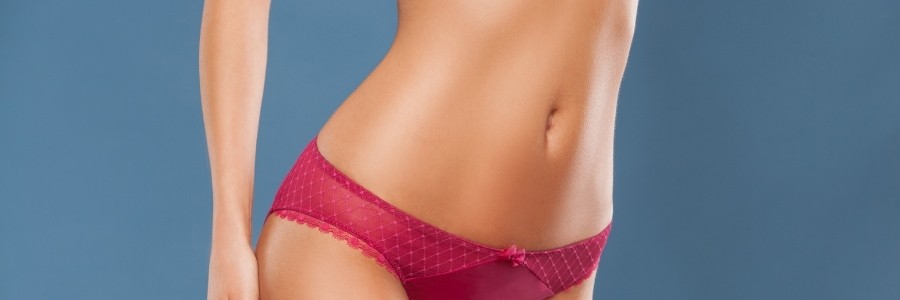Liposuction is a surgical procedure that removes unwanted fat cells from certain areas of the body. It is used mainly for body contouring and is not intended to be a weight loss procedure. Liposuction is traditionally used for candidates who have tried dieting and exercising but can not manage to lose weight in certain areas. These areas are known as “trouble spots” and pretty much everyone has them. Liposuction can be used to address trouble spots and assist individuals to achieve their body contouring goals.
Which Liposuction Procedure Is Best?
Liposuction options have come a long way in the past few decades and there are much improved methods today versus the traditional liposuction of the past. Depending on the type of fat deposits that need to be addressed and the part of the body being targeted, there are some different liposuction options available.
Tumescent liposuction is currently the most popular form of liposuction as well as cosmetic procedure in the United States. The surgeon uses an anesthetic solution often made with saline, lidocaine, and epinephrine to numb the areas and break down fat during the procedure. There are different techniques of tumescent liposuction that are classified by how much liquid is injected during the procedure. It is efficient, less painful, has fewer associated risks, and a quicker recovery time than traditional liposuction.
Ultrasound-Assisted Liposuction (UAL) Ultrasound waves are used to break up and liquefy fat in the targeted areas making it easier to remove it using a thin type of medical vacuum called a cannula. UAL is normally used to remove stubborn fat that is more fibrous.
Laser-Assisted Liposuction (LAL) uses heat in varying wavelength degrees to melt fat with a fiber-optic laser. Using the laser triggers the body to produce more collagen which helps tighten the skin.
Radiofrequency-assisted liposuction (RAL) is a minimally invasive method that uses thermal energy to eliminate unwanted fat and helps trigger collagen production that assists with skin tightening.
Can I Get My Whole Body Liposuctioned In One Day?
Liposuction can be performed on many parts of the body such as knees, calves & ankles, thighs, stomach, back, love handles, chin & neck, arms, etc. While all these areas can be candidates for liposuction, they are normally done either one at a time or some may be combined to achieve optimal results. Example: Liposuction of the abdomen, back, and love handles may be done together to ensure natural-looking proportions and contour.
Related: Is Liposuction Better Before or After Pregnancy?
Plastic surgeons and experts agree they would not recommend total body liposuction be completed in one session, but rather address these areas in planned out stages with recovery periods between procedures.
Plastic Surgeons Agree Total Body Liposuction Is Not A Good Idea Because:
Fat removal limitations:
The fluid that is removed during a liposuction procedure is called lipoaspirate. Lipoaspirate is made up of whatever solution the surgeon is injecting into the body to assist with the procedure, as well as blood, and liquified fat from the patient. According to the American Society of Plastic Surgeons, only a certain amount of lipoaspirate can safely be extracted from an individual in one session. This amount varies depending on the patient’s weight but no more than 5 liters from any patient can safely be extracted during a procedure.
Anesthesia Safety
General and local anesthesia, as well as the injected variety used in liposuction, all have their limitations, risks and side effects. To perform a total body liposuction procedure may be dangerous because of the extended time the patient would be exposed to the anesthesia.
Logistics
Liposuction surgery often requires the operating team to position and reposition the patient so they can access the targeted treatment areas. The team also requires time to properly prep each area before they can safely perform the procedure. The time requirements of these protocols coupled with the concerns over anesthesia safety create a scenario that most surgeons will refuse to entertain.
Recovery
Regardless of the technique used, or area targeted, each completed area must be cared for post-surgery to ensure quality results and patient safety. Compression garments are required for several weeks to help reduce swelling and bruising. In addition, some forms of liposuction involve sutures that also require post-surgical care. The aftercare requirements for total body liposuction would be problematic and stressful to a patient.
Related: Liposuction Recovery
A selection of plastic surgeons were asked about liposuction procedures and a notable takeaway from this survey was that the most important element when considering liposuction, is the choice of which surgeon you will use. The equipment and technique will not be the most instrumental factor in your surgery results, but more the expertise, knowledge, and experience of the surgeon. Take care to choose a surgeon that is board-certified, has the expertise, skill, and track record needed to trust with your surgery.
If you are frustrated with your body image, have tried exercise and diet but can not get rid of stubborn fat deposits, please contact our offices to set up a consultation today. We can help determine which procedure would be best for you.



